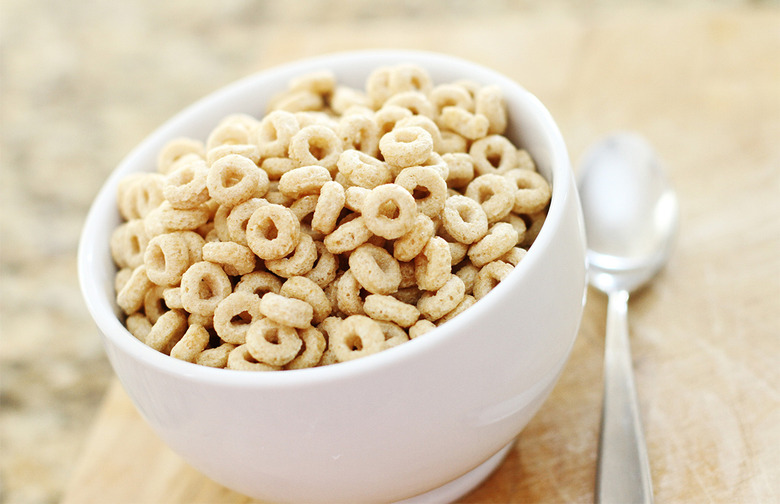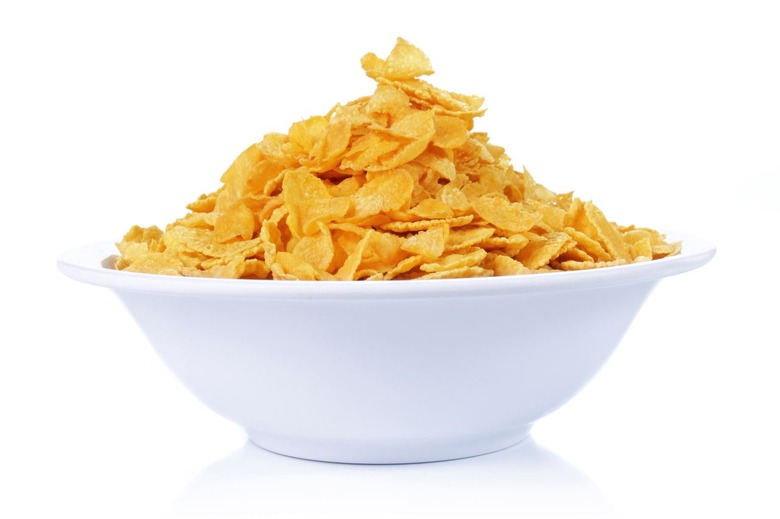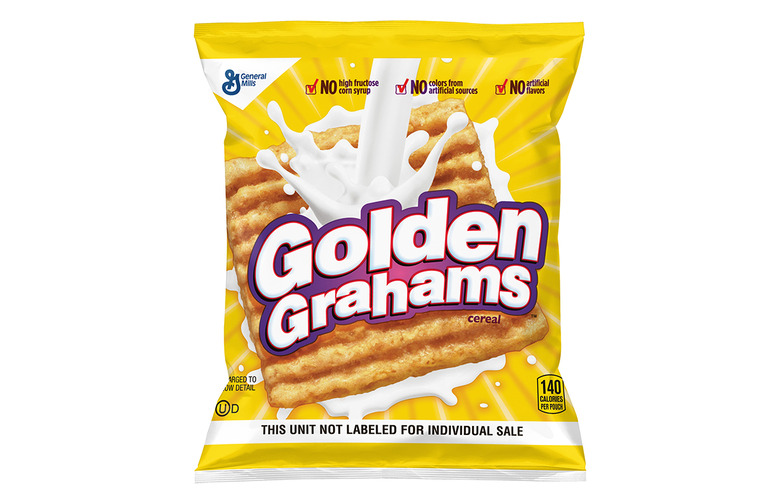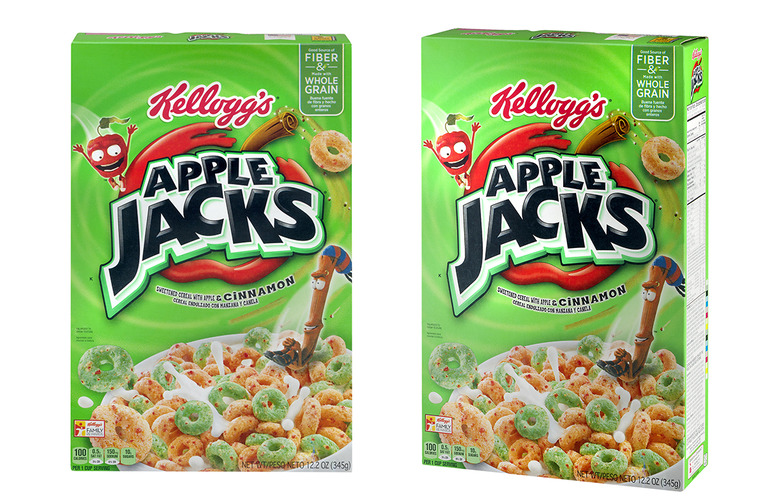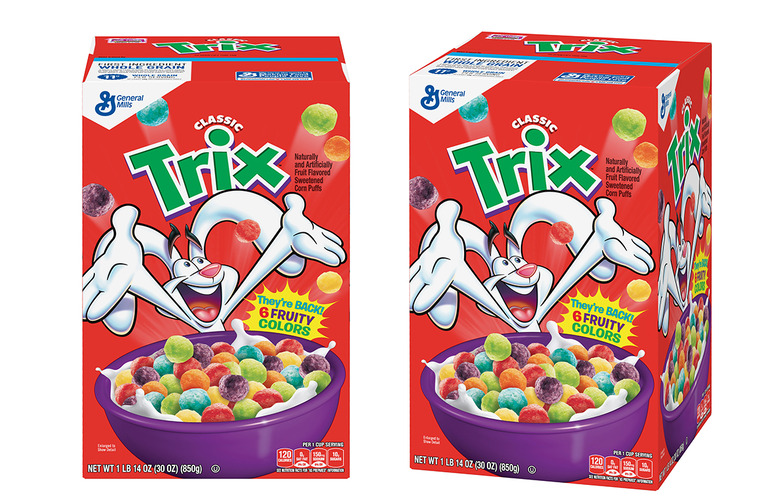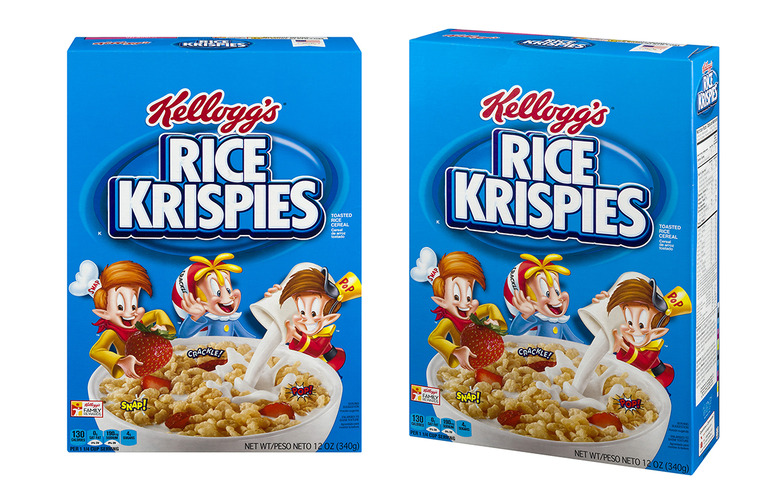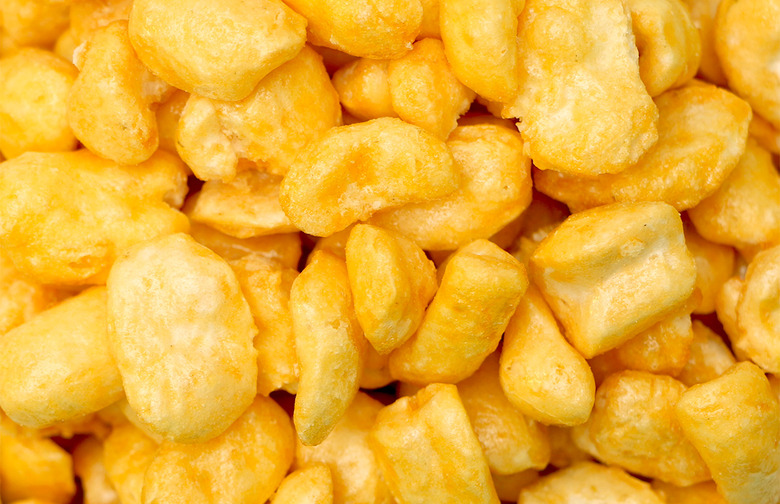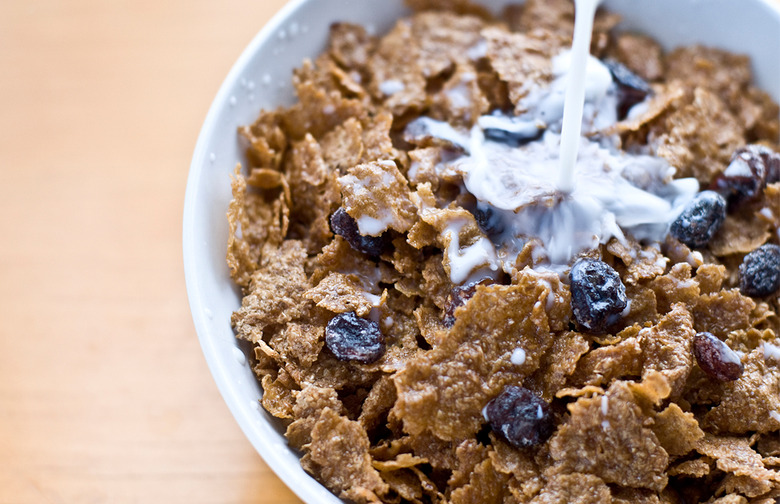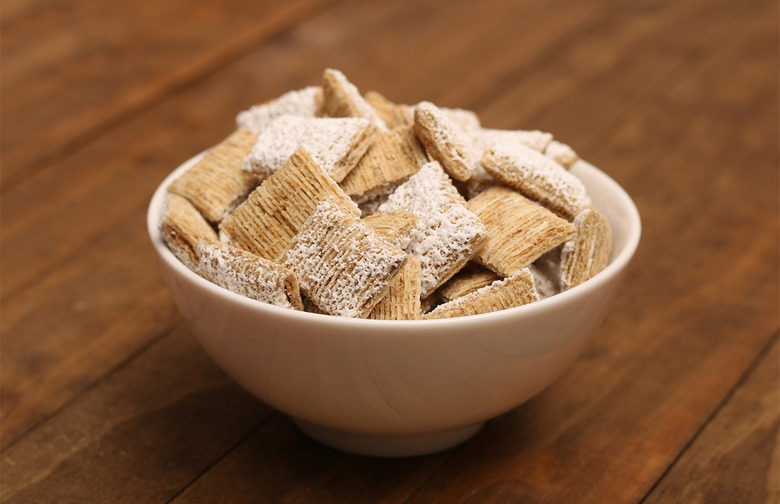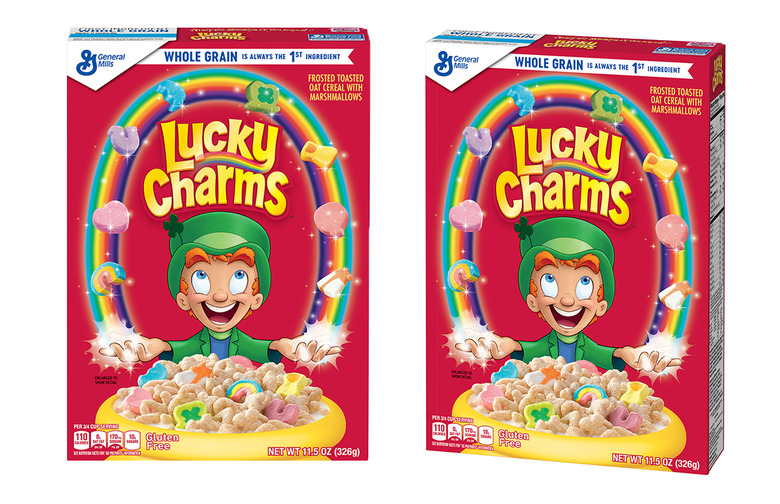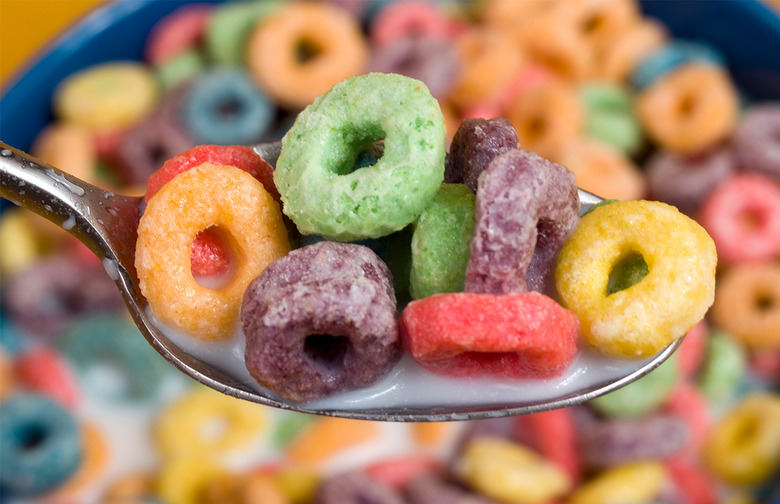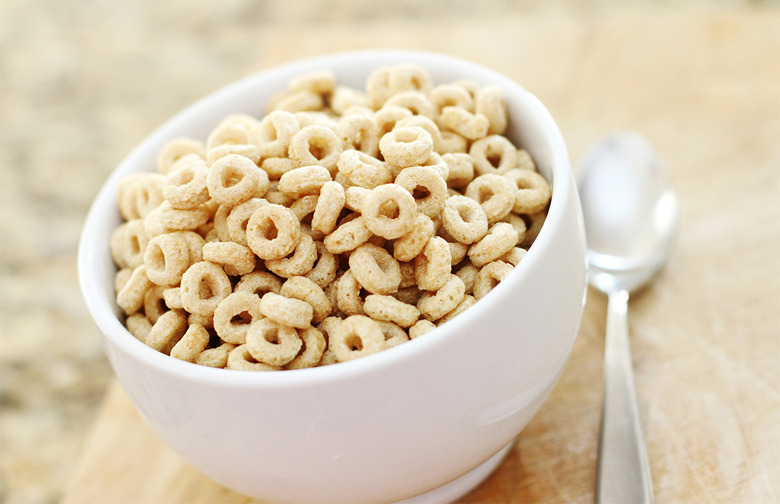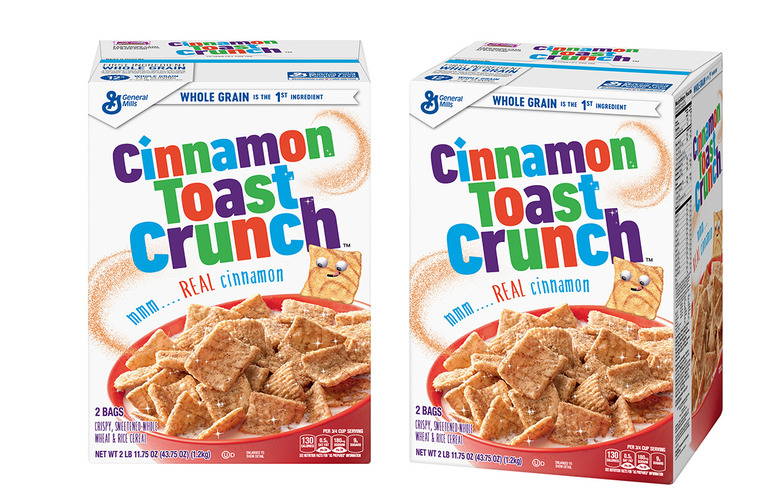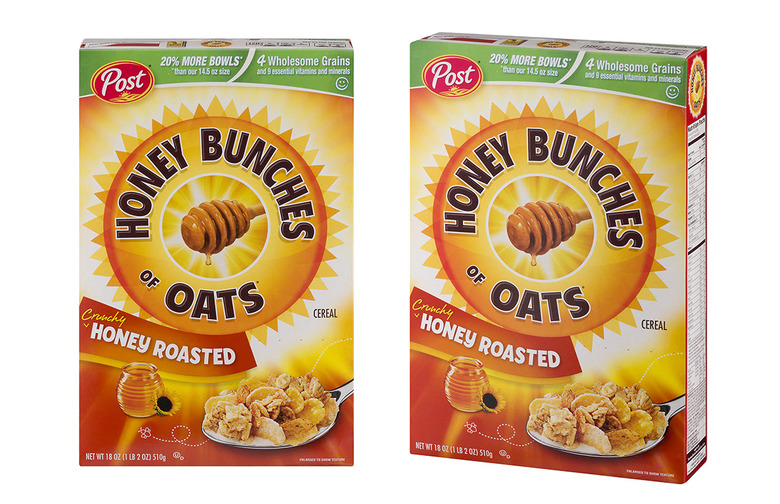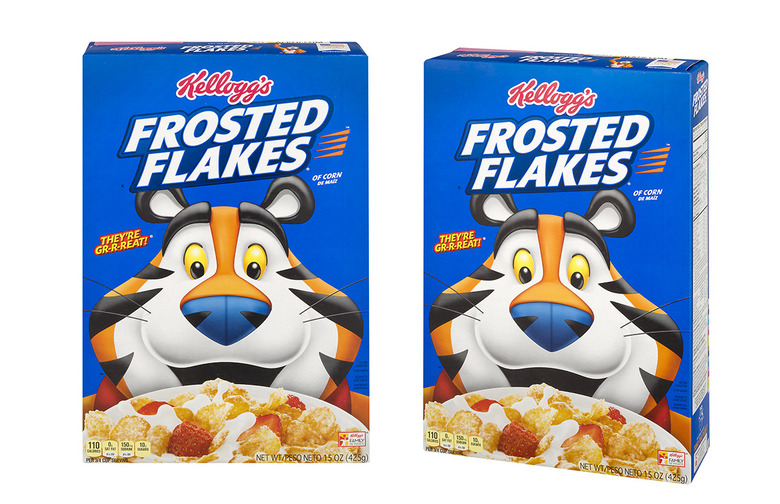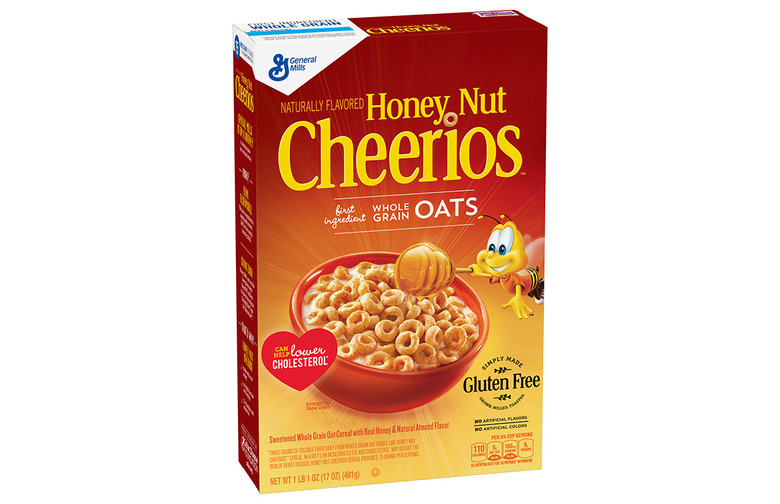Things You Didn't Know About The 16 Most Popular Breakfast Cereals Gallery
We tend to not give too much thought to the stories behind the breakfast cereals on our supermarket shelves; in many ways they're timeless, and it's hard to think of a world before they existed. But just like every other consumer product, they were invented and marketed by teams of professionals, and we bet that there's a lot you don't know about the top-selling brands.
Corn Flakes
Corn Flakes were actually created by accident: There was a movement among Seventh-day Adventists in the late 1800s to stick to a diet of bland vegetarian foods (long story), and at Michigan's Battle Creek Sanitarium superintendent John Harvey Kellogg decided to develop some new bland foods for his guests. So he tasked his younger brother Will Keith Kellogg with coming up with some recipes. Will accidentally left a batch of cooked corn and wheat sitting out one day, and when he returned he discovered that it had gone stale. After some experimentation, Corn Flakes were born. And as for the rooster mascot? One of Kellogg's friends, named Nansi Richards, was a legendary Welsh harpist, and she pointed out that the Welsh word for rooster is ceiliog, whose pronunciation sounds very similar to Kellogg.
Golden Grahams
Introduced in 1975 by General Mills, Golden Grahams were inspired by (as the name might imply) graham crackers. So as can be expected, they happen to make some mighty fine s'mores treats when combined with corn syrup, butter, chocolate chips, and mini-marshmallows.
Apple Jacks
Kellogg's Apple Jacks were invented in 1965 by a summer research assistant on break from MIT named William Thilly; today he's a professor at the school. Originally launched as Apple O's, the name was changed to Apple Jacks in 1975. The cereal was entirely orange until 1998, when green rings were introduced. The cereal's longtime mascots were a boy and girl named the Apple Jacks Kids, but today the mascots are a clumsy apple named Bad Apple and a Jamaican cinnamon stick named CinnaMon (seriously).
Trix
Trix were originally introduced by General Mills in 1954 as a sweeter, more colorful version of another popular cereal, Kix (hence the similar name and shape). The cereal has gone through a wide range of colors, shapes, and sizes: Over the years, flavors including lime, berry, and watermelon were added to the original lineup of orange, lemon, and raspberry; the pieces were fruit-shaped instead of round from 1991 to 2007; and artificial colors and flavors were briefly removed from 2015 to 2017.
Rice Krispies
Kellogg's Rice Krispies first hit shelves in 1928, making them one of the oldest cereal brands around. They're made by forming a paste of mostly rice and sugar, then cooking, drying, and toasting it; the famed "snap, crackle, and pop" occur when thin, hollow walls created during the drying process collapse. The characters Snap, Crackle, and Pop have been around since the 1930s, and are the longest-running Kellogg's cartoon mascots. The cereal is called Rice Bubbles in Australia and New Zealand.
Cap’n Crunch
Introduced in 1963 by Quaker Oats (which is today owned by PepsiCo), Cap'n Crunch was invented by a flavorist named Pamela Low, who was inspired by a childhood favorite snack of rice topped with butter and brown sugar (which actually sounds pretty tasty). It actually took quite a while to develop, as it was the first cereal to use oil as a flavor delivery mechanism. Its mascot's real name is Horatio Magellan Crunch, and because he only has three stripes on his uniform (instead of four), he's technically a Commander, not a Captain.
Corn Pops
Corn Pops has gone through more name changes than just about any other cereal: It was introduced by Kellogg's in 1950 as Corn Pops, but the name was changed to Sugar Corn Pops in 1951, then Sugar Pops, then Sugar Corn Pops in 1978, then back to Corn Pops in 1984 (when the word "sugar" was removed from just about all cereal names), then to Pops in 2006, and then finally back to Corn Pops later that year. They're relatively flat and smooth in the US, but in Canada they're spherical, closely resembling Kix.
Raisin Bran
The term "raisin bran" isn't actually trademarked, so Kellogg's, Post, and General Mills all sell their own (nearly identical) versions of the product (General Mills' is called Total Raisin Bran). The product was actually first introduced in 1926 by a company that doesn't exist anymore, named Skinner's. Skinner held the trademark to the name until 1944, when a court stripped it from them because the name was "merely descriptive of the ingredients."
Frosted Mini-Wheats
When Frosted Mini-Wheats were first introduced by Kellogg's in 1969, they were initially much larger than they are today; the current, even-more-mini size was rolled out in 1980. From the 1980s to the 1990s, they were known in the U.K. as Toppas.
Lucky Charms
General Mills' Lucky Charms were invented by a product developer named John Holahan in 1964, when he was tasked with using the company's existing Wheaties or Cheerios machines to create a new cereal; he had his "eureka" moment after combining Cheerios with diced-up bits of Brach's Circus Peanuts. Even though it was the first cereal to include marshmallows (called "marbits" here), it didn't become a top seller until the "Cheerios" themselves were sugar-coated. Its legendary mascot, Lucky the Leprechaun, has been with the cereal since its launch, and was originally named L.C. Leprechaun. Over the years, more than 40 different marbits have cycled through the rotation.
Froot Loops
Kellogg's introduced Froot Loops (and its famed mascot, Toucan Sam) in 1963; the cereal doesn't contain any actual fruit, and contrary to popular belief, all colors are the same exact flavor. Froot Loops were originally only red, orange, and yellow, but in the 1990s green, purple, and blue were added.
Cheerios
Called CheeriOats upon their introduction in 1941, Cheerios were given their current name in 1945. Made almost entirely of ground oats, their shape is called a torus. From the 1950s to the early-1960s, Cheerios had one of the most famous mascots of the day, named the Cheerios Kid; today its commercials are best identified by the "Good Goes Around" jingle, sung by Boston-based rapper and producer Latrell James.
Cinnamon Toast Crunch
Invented by a General Mills product manager named Elisabeth Trach in 1984, and (obviously) inspired by the flavors of cinnamon-sugar-topped toast, Cinnamon Toast Crunch is made primarily of wheat and rice. Many may remember its famous mascot, a jolly baker named Wendell, but he hasn't actually appeared on the box since 2009; he was replaced by murderous, Cinnamon Toast Crunch-shaped cannibals.
Honey Bunches of Oats
Invented by a longtime Post employee named Vernon J. Herzog in 1989 after three years of mixing and matching existing Post Cereals, Honey Bunches of Oats is made up of three types of flakes and oat clusters. Since its release, more than 30 varieties have been released, including Mango Coconut, Just Bunches, Greek Mixed Berry, Banana Bunches, and Gluten Free.
Frosted Flakes
Frosted Flakes were introduced in 1952 as Sugar Frosted Flakes, but (like its competitors Sugar Smacks and Sugar Corn Pops) it removed "sugar" from its name in the 1980s. And as with Raisin Bran, several generic competitors are allowed to use the same name. Its famed mascot, Tony the Tiger, was voiced by actor Thurl Ravenscroft for more than 50 years; Ravenscroft is also known for singing "You're a Mean One, Mr. Grinch." It's known as Frosties in most of Europe and Corn Frosty in Japan.
Honey Nut Cheerios
The best-selling cereal in the United States, Honey Nut Cheerios were introduced in 1979 by General Mills as an offshoot of Cheerios. It wasn't the first Cheerios offshoot; those were short-lived Cinnamon Nut Cheerios, which were introduced in 1976. While it was flavored with actual nuts until 2006, in that year the formula was altered to use peach and apricot pits instead. Its famed mascot didn't actually have a name until 2000, when a Texas fifth-grader won a contest by suggesting "BuzzBee;" the character's name has since been shortened to Buzz. In commercials, he's been voiced by actors including Billy West, Arnold Stand, and Charlie Schlatter; today, he's voiced by Jason Marsden, whose other voice-over credits include Max Goof in A Goofy Movie, Chester in The Fairly OddParents, and Nermal in The Garfield Show. There are currently more than a dozen Cheerios flavors, and we taste-tested 12 of them.
Read more: 13 Bizarre Breakfast Cereals You Won't Believe Ever Existed
The 10 Best Cereal Box Prizes of All Time
The Most Popular Breakfast Cereals Through the Decades
10 Breakfast Cereals That Have as Much Sugar as Candy
15 Crazy Cereal Mascots That Time Forgot
